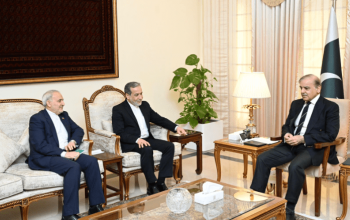Artificial intelligence, or AI, is creating the base on which the world would build its economic structures and social systems. This will be done by both public and private sectors by adopting the new technology. The initial corporate excitement about what is called generative AI has been replaced with caution. This software was seen as an exciting new wave of technology but companies in almost all industries are thinking through the economics as well as the dangers it poses to privacy. Widespread use of the new technology could be years into the future before it could boost productive activities and add trillions of dollars to the global economy.
According to Steve Lohr assessing the situation for The New York Times, “the lesson of history, from steam power to the internet, is that there is a lengthy lag between the arrival of a new technology and its broad adoption — which is what transforms industries and helps fuel the economy. In the 1990s, there were confident predictions that the internet and the web would disrupt the retailing, advertising and media industries. Those predictions proved to be true, but that was more than a decade later, well after the dot-com bubble had burst.”
The adoption of the new technology was done relatively quickly by the youth. My personal example is suggestive. My wife and I have lived in the United States now for more than half a century. Our two children were born here. They don’t go to the stores to buy the things they need; practically everything is bought online and delivered at home. Fueling the development was a flood of money. “We are going to see a similar gold rush this time,” says Vijay Sankaran, chief technology officer of Johnson Controls, a large supplier of building equipment, software and services. “We’ll see a lot of learning.” As Sankaran’s name suggests, he is of Indian origin. Those who were educated in India but couldn’t find the jobs they were looking for in their country moved to the United States and are now dominant players in the technology field. People in the United States who are of Pakistani origin have been left far behind. The Pakistani diaspora is fairly large (more than 600,000), but the average income of the group is half that of the Indian-American average. The new President of the World Bank is a Sikh of Indian origin who had made a name for himself by making the MasterCard, into a large and highly automated enterprise.
I will go back into history a bit to indicate why Pakistan has fallen so far behind India. After leaving the presidency in 1969 when he was replaced by another military president, Field Marshall Ayub Khan moved into a house he had built for his retirement in the hills that overlooked the new city of Islamabad. I went to see him there in January 1974. That was a few months before he died of a massive heart attack. I had asked for an interview with him as I was then at Harvard University working on my first book on Pakistan. Much of the writing was done while I was closely associated with the Development Advisory Service (DAS) that Harvard had founded to provide development expertise to the developing world. The DAS had sent a bunch of economists to work in Pakistan’s Planning Commission then located in Karachi and in the two Provincial Planning Departments in Lahore and Dhaka, respectively the capitals of West and East Pakistan. Several of them wrote books detailing their experience in Pakistan, lauding what they called the “Pakistani growth model”. Most notable of these accounts was by Gustav F Papanek whose book, Pakistan’s Development: Social Goals and Private Incentives, along with some other written by his Harvard colleagues, suggested that Pakistan’s development experience should be followed by the states that had been decolonised by European powers and were now searching for ways to build their economies.
Ayub Khan was waiting for me in the pleasantly warm January sun reading from a book. He greeted me warmly and questioned me about the line I was taking in the book he knew I was then working on. “How have you covered my eleven-year period as the head of the Pakistani state?” he asked. I told him that I was treating his period as the golden period of Pakistan’s then 27-year-old history. “But Zulfi doesn’t think so,” he said, referring to the statements Zulfikar Ali Bhutto was then making after leaving Ayub Khan’s government. He had served in two cabinet positions in the Ayub Khan government — first in charge of Commerce and then of Foreign Affairs. I said that after assuming the presidency in December 1971 after the emergence of East Pakistan as the independent state of Bangladesh, he had destroyed most of the good Ayub Khan had done to the country’s economy. I then asked him what, in his view, was his contribution to the Pakistani growth model which the world development experts at that time were so excited about. His answer surprised me:
“I was not a dictator. I did what I was advised to do by experts working in the fields about which I knew little. I needed good and sound advice and for that I built the Planning Commission. But Pakistan didn’t have well-trained and experienced economists to work in the Commission and in the Planning Departments of the two provinces. President John Kennedy sent a team of experts that first visited me in Karachi and then went on to New Delhi to meet with the Indian Prime Minister Nehru. The Americans were keen to help the two countries develop their economies to counter the model the Soviet Union then was selling the world. My request was to strengthen the planning apparatus by positioning American economists in Karachi, Lahore and Dhaka. Nehru asked for the Americans to set up institutions of science and technology patterned after the famed Massachusetts of Institute of Technology, the MIT. I wish I had asked for that as well. It doesn’t take long to train economists, but technology institutions are more difficult to develop.”
It was apparent even then for Ayub Khan to see that India was laying the foundation for becoming one of the leaders in the world in science and technology. That has happened. A recent example of India’s technological advance is the robot it landed on the Moon.
Published in The Express Tribune, September 11th, 2023.
Like Opinion & Editorial on Facebook, follow @ETOpEd on Twitter to receive all updates on all our daily pieces.
Read the full story at the express tribune website.


